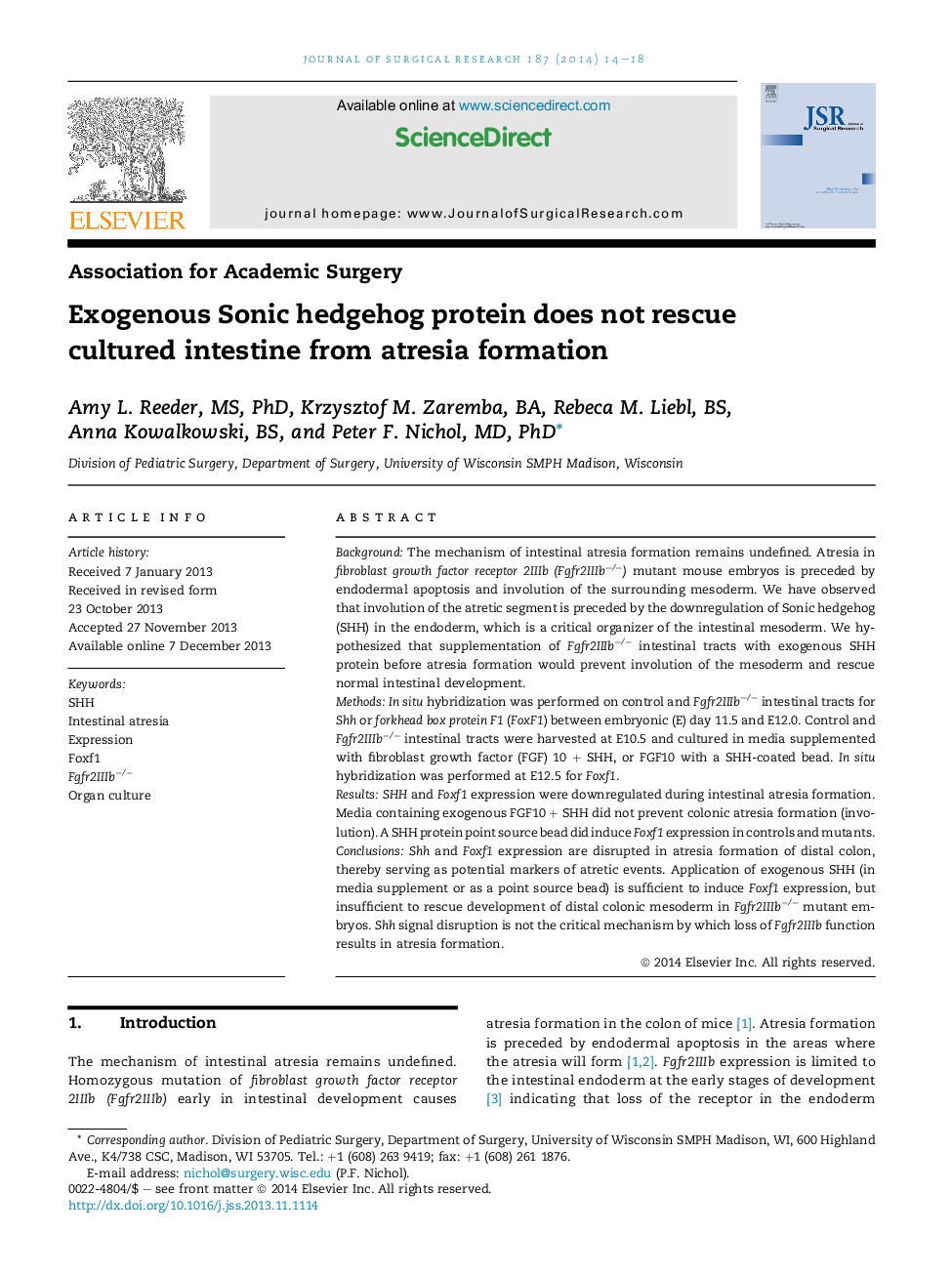| Article ID | Journal | Published Year | Pages | File Type |
|---|---|---|---|---|
| 4300265 | Journal of Surgical Research | 2014 | 5 Pages |
BackgroundThe mechanism of intestinal atresia formation remains undefined. Atresia in fibroblast growth factor receptor 2IIIb (Fgfr2IIIb−/−) mutant mouse embryos is preceded by endodermal apoptosis and involution of the surrounding mesoderm. We have observed that involution of the atretic segment is preceded by the downregulation of Sonic hedgehog (SHH) in the endoderm, which is a critical organizer of the intestinal mesoderm. We hypothesized that supplementation of Fgfr2IIIb−/− intestinal tracts with exogenous SHH protein before atresia formation would prevent involution of the mesoderm and rescue normal intestinal development.MethodsIn situ hybridization was performed on control and Fgfr2IIIb−/− intestinal tracts for Shh or forkhead box protein F1 (FoxF1) between embryonic (E) day 11.5 and E12.0. Control and Fgfr2IIIb−/− intestinal tracts were harvested at E10.5 and cultured in media supplemented with fibroblast growth factor (FGF) 10 + SHH, or FGF10 with a SHH-coated bead. In situ hybridization was performed at E12.5 for Foxf1.ResultsSHH and Foxf1 expression were downregulated during intestinal atresia formation. Media containing exogenous FGF10 + SHH did not prevent colonic atresia formation (involution). A SHH protein point source bead did induce Foxf1 expression in controls and mutants.ConclusionsShh and Foxf1 expression are disrupted in atresia formation of distal colon, thereby serving as potential markers of atretic events. Application of exogenous SHH (in media supplement or as a point source bead) is sufficient to induce Foxf1 expression, but insufficient to rescue development of distal colonic mesoderm in Fgfr2IIIb−/− mutant embryos. Shh signal disruption is not the critical mechanism by which loss of Fgfr2IIIb function results in atresia formation.
